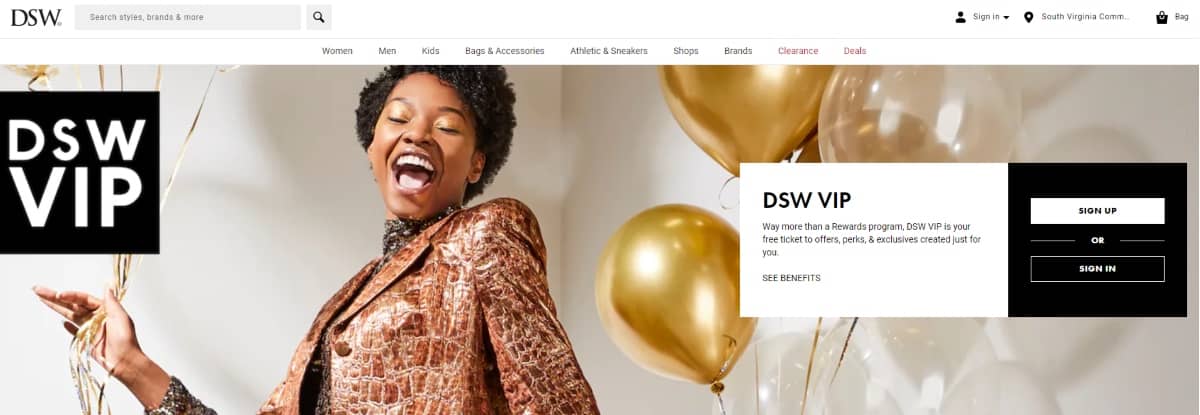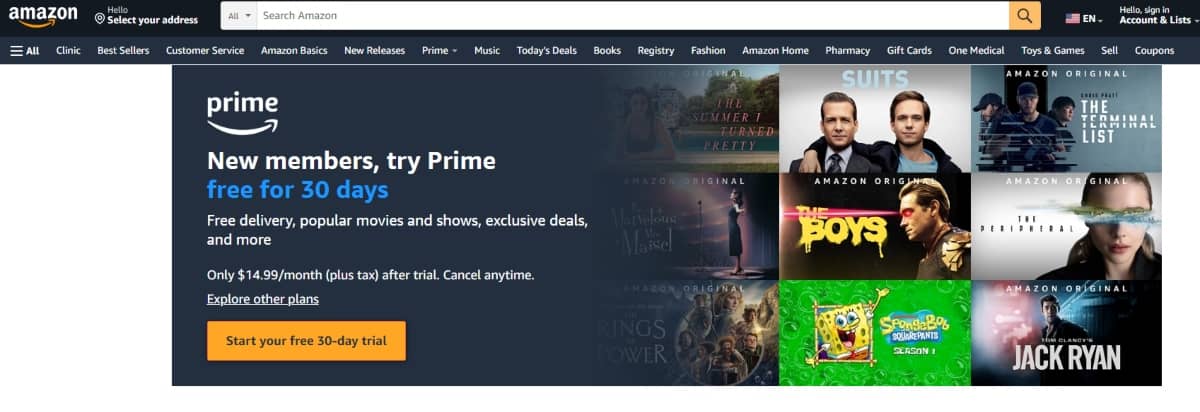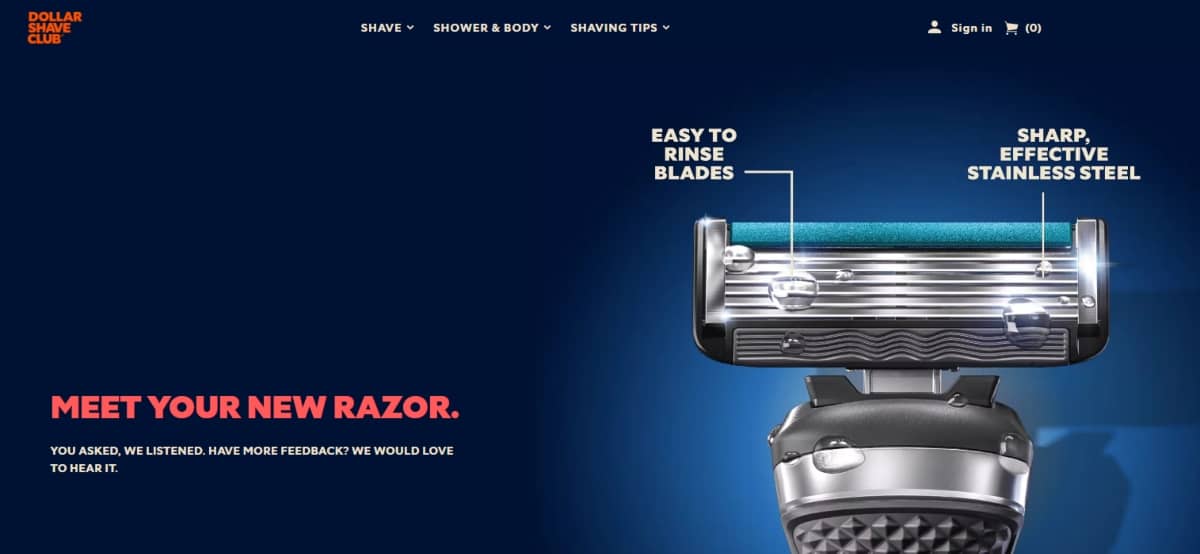What Are Loyalty Programs & Why You Should Try Them in 2024
The popularity of loyalty programs in digital marketing tells us one thing — for all their sophistication, modern consumers are still regular humans driven by regular desires.

To underscore this point, the average American consumer belongs to 16.7 consumer loyalty programs.
Customers still (and will always) value incentives.
But with only 42% of executives believing their customer loyalty programs to be effective, grasping how these programs work is critical to succeeding.
What are Customer Loyalty Programs, and How Do They Work?
Customer loyalty programs use incentives, rewards, and personalized experiences to keep customers engaged, satisfied, and loyal to a brand or company.
One well-known example is American Airlines’ AAdvantage loyalty program, introduced in 1981.
The program gives fliers points for each dollar spent.
Customers can redeem points for free flights, flight upgrades, car rentals, hotel stays, and more.
Initiatives like AAdvantage drove the appeal of loyalty programs in the airline industry and, by extension, across multiple sectors.
Today, loyalty programs are commonplace.
More than 90% of companies have some loyalty program, and 3.3 billion loyalty memberships exist in the U.S. alone.
Loyalty programs vary by brand; businesses use everything from points-based programs to free perks programs (more on these later).
However, here’s a general outlook of how a typical loyalty program works:
- The customer makes a purchase or engages with the brand
- The brand prompts the customer to sign up for its loyalty program, either online or in-store.
- The customer makes purchases and earns points or rewards based on their spending.
- The customer can track their progress toward rewards online or through a mobile app.
- Once the customer has accumulated enough points or rewards, they can redeem them for discounts, free products, or other rewards.
Benefits of Customer Loyalty Programs
1. Improves customer retention
Growth isn’t just dependent on how many new customers you can attract but also on your customer retention rate.
Loyalty programs can be tools to elevate the customer journey experience, express appreciation and build strong, loyal customer relationships.
The result?
Reciprocity from customers in the form of brand loyalty and repeat purchases.
Forrester reports that 87% of consumers who feel appreciated plan to stay with the brand, 83% plan to spend more, and 88% would advocate for the brand.
2. Increases word-of-mouth referrals
The Forrester research referenced above says 88% of customers who feel appreciated would advocate for the brand.
In other words, they’d tell others about the brand.
When customers enjoy additional perks by doing business with you, it’s an incentive for them to invite others to enjoy the same experience.
Driving such word-of-mouth referrals via loyalty programs is a cheaper and better marketing strategy.
Cheaper because it costs you less to acquire customers.
And better because you convert more leads as 81% of people typically trust the recommendations of friends and family over advice from businesses.
3. Cost-efficient
Loyalty programs encourage continuous patronage, which in turn increases customer lifetime value.
Repeat customers are more cost-effective than acquiring new customers.
Word on the street is it costs at least five times more to acquire a new customer than to retain existing customers.
This makes sense since customers buy from brands they trust.
And it’d take more effort to prove your worth to a new lead than to make a repeat customer out of a consumer that considers your business one of their favorite brands.
4. Social proof
Social proof is a psychological concept that represents people’s tendency to make decisions in line with the choices or opinions of others.
For instance, if people see many positive reviews about your product on social media, they are more likely to make a purchase.
In the context of loyalty programs, when prospects see your customers are loyal and engaged, they are likely to perceive you as trustworthy.
This automatically makes your product more attractive, builds credibility, and increases the likelihood that people will purchase it.
5. Sets you apart from your competition
You don’t want your small business to get lost in the sea of sameness.
Instead, you want to stand out and remain distinct.
And your loyalty program is the tool to infuse your brand with that element of uniqueness and drive brand loyalty.
A creative and well-executed loyalty program can generate a sense of exclusivity for customers and help establish your business as a more desirable choice.
Types of Customer Loyalty Programs
1. Point programs
Points programs are one of the most popular loyalty program formats.
It allows customers to earn points for making purchases or engaging in certain behaviors, such as referrals.
Loyalty points earned and stored on a loyalty card can be redeemed for rewards such as discounts, upgrades, free products, or exclusive experiences.
The more points a customer accumulates through the target action, the greater the rewards they can receive.
2. Free perks programs
In a free perks program, brands reward customers for carrying out a desired action or consistent patronage.
Typical perks include free shipping, product discounts, exclusive event access, and more.
This format is less flexible than the points program, but it’s also a great way to build stronger relationships with customers, reward return customers, and motivate them to stick with you.
3. Spend-based programs
As the name implies, spend-based loyalty schemes reward customers based on how much they spend.
These rewards programs typically award customers loyalty points based on every dollar spent (yes, just like American Airlines’ AAdvantage program).
Customers accumulate such points and redeem them for specified benefits later.
One of the goals of spend-based programs is to encourage customers to spend more per purchase or make frequent purchases.
4. Gamification programs

Gamification programs often involve game-like elements or systems where customers can earn points, badges, or other rewards for completing specific actions.
Actions such as:
- Making a purchase
- Taking part in a challenge
- Referring friends, etc.
Nike, for example, allows customers to earn badges and rewards for reaching fitness goals.
5. Tier-based programs
Brands use tiered loyalty programs to segment customers into different tiers based on their level of loyalty.
Brands determine loyalty tiers by spending level, purchase frequency, and other brand-specific factors or customer behavior that indicate brand loyalty.
Using these metrics, customers can move from one tier to another when their loyalty is deemed to have crossed a particular threshold.
As loyal customers move up the ladder, they access more juicy benefits.
6. Paid programs
In the case of paid loyalty programs, brands require customers to pay a fee for exclusive benefits they begin to enjoy instantly and over a stipulated period.
It’s like signing up to join an exclusive club of customers entitled to certain benefits.
For instance, customers subscribed to Amazon Prime enjoy free shipping, exclusive deals, and access to streaming content for an annual fee.
7. Community programs
Community loyalty programs reward customers by providing them with a sense of belonging.
The goal is to foster a privileged relationship between customers and the brand.
Eligible customers can access online forums, social media groups, exclusive events, send in product feedback, access user-generated content, and interact with the brand and other customers.
For instance, Sephora's Beauty Insider Community allows customers to share beauty tips, product reviews, and advice with each other.
8. Subscription programs
Here, customers pay for a product or service upfront and enjoy exclusive rewards.
The goal is to offer recurring benefits that significantly elevate the customer experience, thus justifying the subscription fee.
9. Mission-based programs
Mission-based programs seek to drive loyalty by ensuring that customers directly or indirectly contribute to social or environmental impact actions by doing business with them.
TOMS, for example, donates one pair of shoes for every pair a customer buys.
Patagonia donates a fraction of its profits to environmental causes, and The Body Shop’s Love Your Body Club allows customers to donate their rewards to charitable organizations.
As such, their customers who are passionate about the same causes see continued patronage of these brands as an avenue to act on their values.
10. Refer-a-friend programs
With a customer referral program, customers earn rewards for referring others to the brand.
These programs are designed to leverage the power of word-of-mouth marketing.
And to incentivize customers to become brand advocates and promoters.
The incentives could range from discounts on future purchases to gifts.
For example, Dropbox offers the referrer and the new customer free extra storage space.
11. Cashback programs
Cashback reward programs offer customers a percentage of the money spent purchasing the brand’s product or service.
Often, customers can only use this partial refund for future purchases with the brand.
And it’s stored in the customer’s account.
Banks are famous for credit card cashback programs.
They allow credit card holders to earn points or cashback rewards on purchases made using their credit cards.
🎯Tips for Customer Loyalty Programs
1. Choose a clever name
What you decide to call your rewards program matters.
A unique name could help with brand awareness.
People would likely find a creative name more compelling and attractive than a run-of-the-mill tag.
So go beyond merely functional names; select something that sparks curiosity, generates interest, and creates excitement.
But keep these in mind:
- The name should align with your brand values
- Reflect benefits of the program
- Be clear, memorable, and suitable for your target audience
Some customer loyalty program examples with great tags include Starbucks’ “Starbucks Rewards,” Sephora’s “Beauty Insider,” CVS Pharmacy’s “ExtraCare,” and Dunkin’ Donuts’ “DD Perks.”
2. Offer variety

Expanding the available rewards can make your loyalty program even more valuable.
Doing this caters to more customer preferences.
And makes your program more attractive as participants can draw value in various ways.
For example, Stars earned by Starbucks’ customers, for instance, can be redeemed for food, drinks, or merchandise.
3. Offer monetary value
Offering monetary value can be a compelling incentive for prospects to become repeat customers.
Including this reward is also beneficial because it’s easy to understand. It’s a benefit the customer can easily calculate and appreciate.
Plus, it gives customers the flexibility to use their rewards as they see fit, which can be particularly appealing if the brand offers a wide range of products or services.
4. Focus on your customers’ values
People move in the direction of their values.
To get your target audience's attention, explore ways to connect your loyalty program with their values.
In other words, see how your rewards can help loyalty program members express their values, such as sustainability, social responsibility, or health and wellness.
Sephora’s Beauty Insider program, for instance, allows customers to use their points to make charitable donations.
5. Offer more than one way to enroll
By offering multiple enrollment options, you can make it easier for customers to join the loyalty program.
You can allow customers to enroll online via your website, mobile app, email, or chat.
Where applicable, you enable customers to sign up at a physical location.
6. Consider partnering with other brands
Partnering with other brands to create special rewards for your customer loyalty program can be a masterstroke.
It could increase customers’ perception of your loyalty rewards' value and expose your brand to new customer demographic segments.
You could partner with complementary brands that offer products or services relevant to your target audience.
Or collaborate with non-competing brands that share a similar customer base.
For example, American Express offers a variety of loyalty programs, many of which offer rewards through partnerships with other brands, such as hotels and airlines.
7. Make it fun
Beyond juicy incentives, customers must also enjoy participating in the loyalty program, as this would keep them engaged.
Plus, an element of fun could be a differentiating factor for your loyalty scheme.
Infuse fun into your loyalty program by adopting a points-based system where customers score points for completing specific actions.
Exclusive benefits are also an excellent way to go; some humor and creativity could also work.
Some Inspiring Customer Loyalty Programs
1. DSW

Designer Shoe Warehouse (DSW) is a popular U.S. shoe retailer with a stellar customer loyalty program called DSW VIP.
The free loyalty program uses a tiered format where customers are classified based on their annual spending amount and enjoy various perks per category, including free shipping, discounts, and free returns.
DSW features three tiers: VIP Club, VIP Gold, and VIP Elite.
VIP Club members earn 1 point on every $1 spent on eligible products, $5 for every $100 spent or for amassing 100 rewards points, and a $5 discount on purchases in their birth month if they submit their birthday details.
VIP Gold members have spent more than $200 within the calendar year.
And VIP Elite members must have spent more than $500.
2. Sephora Beauty Insider

Since launching in 2007, Sephora’s Beauty Insider Loyalty Program has amassed over 17 million members.
The cosmetic brand combines a tiered system with a community program.
Customers earn points on every dollar spent. And are grouped based on the amount spent within a calendar year.
Sign-up is free, and members of the basic tier enjoy free beauty lessons, a birthday gift, and more.
To get to the second tier, Very Important Beauty Insider, customers must spend at least $350 within a year.
Customers on this level enjoy all regular Insider benefits plus extra, including free makeovers and monthly gifts.
The final tier is the VIB Rouge which requires loyalty members to spend a minimum of $1000 annually.
It offers even more high-end benefits, including invites to exclusive events and access to exclusive products.
3. Starbucks Rewards

Starbucks offers a gamified loyalty program where customers earn stars to redeem for food, drinks, and more rewards.
You earn 1 or 2 stars on every $1 spent, depending on your payment method.
Starbucks Rewards features a tier system where a specific number of stars unlocks new benefits:
- 25 stars get you a customized drink
- And with 100 stars, you can snap up brewed hot or iced coffee, tea, and snacks.
- 200 stars will fetch you a handcrafted drink or breakfast
- While 300 stars guarantee you a lunch sandwich, protein box, or a bag of coffee.
- And 400 points will get you your choice of Starbucks merchandise.
4. Amazon Prime

Amazon Prime is an example of a paid or premium loyalty program.
Unlike regular loyalty programs that look to entice customers with freebies, Amazon provides extra value at a price.
Why is this working?
By becoming an Amazon Prime subscriber For a fee of $14.99 a month (or $139 a year), customers enjoy instant gratification through free next-day shipping.
On top of that, Prime subscribers also get special discounts, deals, the first option on new products, and access to Amazon Prime Video's original content.
5. Dollar Shave Club

Dollar Shave Club is a subscription-based loyalty program but without membership fees.
You become a member by making your first purchase and instantly get access to a range of benefits.
Benefits include free shipping on razor subscriptions, exclusive discounts, first access to new products, exclusive products, birthday gifts, member-only content, and more.
Loyal Customers Are Made
Don’t leave customer retention and loyalty to chance; instead, be intentional about retaining your current customers and driving more user engagement from them.
A big part of taking charge of this process is nailing your customer loyalty program.
Designing the right program requires customer research, creativity, resourcefulness, and an obsession with delivering an excellent customer experience.
All in all, constantly remind yourself that retaining customers is down to proving to them that they matter.
So show, don’t just tell.
Dozie Anyaegbunam is a B2B content writer and strategist. A Cannes Lions certified storyteller, Dozie has crafted compelling content for brands such as Mirasee, SmartBlogger, Growth Mentor, and more. He's also Dodo and Ronan's dad, a proud flâneur, and a Felix Baumgartner wannabe. Don't miss his podcast, The Newcomers, where he interviews immigrants about the struggles and lessons that come with starting life in a new country.